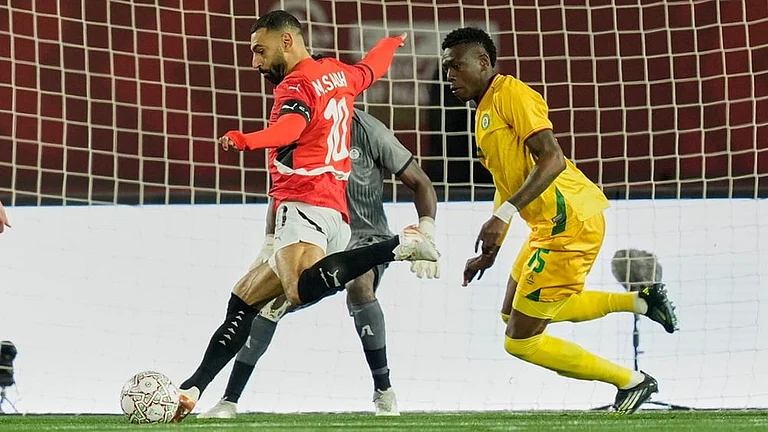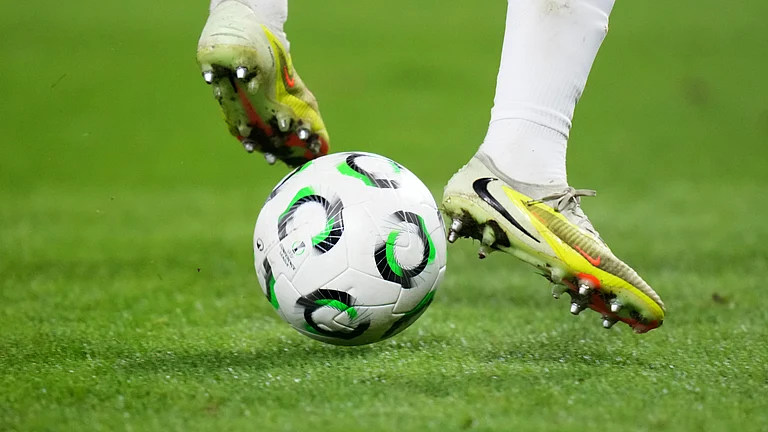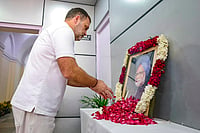Tug of Waugh

Over the next week or so, the 14 participating nations in the 2003 cricket World Cup will announce their squads of 15. Leaving aside minnows like Bangladesh, the cricket selectors of some frontline teams have some big thinking to do -- for a handful of spots. Most teams have at least eight to nine players who pick themselves in the best-playing 11, which means there are at best a couple of spots going. That's where it gets interesting, for the international future of some prominent, exciting cricketers is inextricably linked to whether they get the selectors nod or not.
One of the questions confronting selectors is whether to back old warhorses. In recent times, some seasoned names were given the axe, either because of a slip in performance levels (Gary Kirsten) or because they didn't fit in their team's scheme of things (Romesh Kaluwitharana), or both (Steve Waugh). Or if you are a Pakistani cricketer (like Saeed Anwar), for some reason that is as clear as mud. Recalling such stalwarts will be taking a step back and an implicit acceptance by selectors of some error of judgement on their part.
More newsprint has been spent debating the pros and cons of bringing back Steve Waugh to the Australian one-day fold than the team's resounding Ashes victory. Opinions galore among the sports-loving Australian public, and apparently those who want Waugh back outnumber those who prefer the status quo. Now that the International Cricket Council (ICC) has clarified that players not in the shortlist of 30 can be selected (Waugh didn't make that cut), vocal outpourings over his selection have reached quite a pitch.
Waugh, being his usual canny, resolute self, has gone in to bat for himself. He knows the six batting spots are taken, and is therefore eyeing the number seven all-rounder's position. Along with the injury to Shane Warne, it's probably the only spot of concern for this superb Australian side. After Andrew Symonds and Ian Harvey fell away, the selectors blooded Shane Watson. However, Watson hasn't really shown conviction in either facet of the game. With a prolific domestic season, Greg Blewett is back in the reckoning. And then, there's Waugh.
In a bid to play in South Africa, Waugh has even started rolling his arm over, something that he had given up in deference to his back. There was a time when he was Australia's choice of bowler in the death overs. Time and injuries might have left their imprint on Waugh's 37-year-old frame, eroded his skill and control, but like Tendulkar, he remains capable of dishing out quite a platter with the ball. He has been bowling for New South Wales, with mild success. He has had some good hits with the bat. And, most of all, he appears to be hungry.
It's a bit of dilemma for the Aussie selectors. They are known to be a hard-nosed, forward-thinking lot with little regard for sentimentality or public opinion. Among their ilk, they are also probably the most transparent in their working and sensitive in the way they handle their players. They took Waugh out of the World Cup picture a year ago, a move that only strengthened the side.
But now, going into the Cup, they have to contend with unforeseen problems. Watson is not firing; other all-rounders aren't making a pressing case for themselves. And if Warne doesn't regain fitness in time, it leaves the Australians short of that precious commodity called experience and markedly weaker lower down in the batting department (none of the other spinners in the reckoning can give it the old-fashioned thump quite likeWarne).
The temptation to bring back Waugh for the World Cup must be strong, especially now that he has accepted a new role for himself, one he has adapted to and can polish in the lead-up. At this position, he doesn't tamper with the balance of his side; if anything, he strengthens it. Waugh walking in at number seven can be a reassuring proposition for the Aussies and a frightening one for the opposition. Add a few overs of in-dippers in the seamer-friendly South African tracks. Waugh looks to be the man.
Bad Company

The first-couple of sprinting, Marion Jones and Tim Montgomery, were recently spotted training with Charlie Francis. Charlie who? You might not remember Charlie Francis, but you surely wouldn't have forgotten Ben Johnson -- the burly Canadian sprinter who blitzed the men's 100 metres field at the 1988 Seoul Olympics with the then-fastest ever time of 9.79 seconds, only to have his gold and world record taken away because drug tests later revealed he had gained an illegal performance advantage by pumping his body with steroids.
Charlie Francis was Johnson's coach right through the eighties, and it was under his tutelage that Johnson sprouted into a thundering, speedy hulk like overnight, and flew from an also-ran to a world-beater. A great believer in performance-enhancing drugs, Francis admitted Johnson used steroids, under his guidance. At the same time, Francis wasn't defensive or remorseful about advocating drug use for athletes, justifying it by saying that everyone was doing it. Both Johnson and Francis were slapped with limited bans, from racing and coaching, respectively.
While Johnson slid into oblivion, Francis has made a name for himself, as a leading sprint coach and a revered name in Canadian track and field circles. Still, he remains a man with a tainted reputation, for his continuing leanings towards the performance-enhancing drug culture. His website smacks of crass commercialism, as it, unabashedly, tries to leverage Johnson's explosive Seoul run. A book co-authored by Francis called 'Speed Trap' is listed as "the inside story on Seoul '88".

With such a chequered past -- and an equally dubious present -- it's no surprise that heads are turning, questions are being asked and speculation is mounting on just what is the association of Jones and Montgomery with Francis. The formal word is that Jones recently split from her coach of five years, Trevor Graham, and signed up with Canadian Derek Hansen, who has been closely associated with Francis. This has sparked off speculation that since linking up directly with Francis would have meant bad publicity, Jones is using Hansen as a front.
Assuming that's true, the next question is, why should Jones -- one of the greatest athletes of all time -- jeopardise her reputation by associating with a character like Francis? Jones has won all the 19 races she entered this year. However, she did express disappointment with her timings. She's won everything in women's sprinting. Possibly the only thing missing from her dossier is the world record, which still belongs to the late Florence Griffith-Joyner -- a blistering 10.49 seconds set in 1988, which many men of sporting wisdom, in light of the time she shaved off and her abrupt retirement soon after, allege wasn't clean.
Jones's best is 10.65 seconds. Jones might be genuinely trying to benefit from Francis's sprinting wisdom, in a bid to become the fastest woman in the world. And that's fair. She hasn't violated any rule. However, by going with Francis, she might have done her public image harm. Guilty by association. If she does indeed run faster under guidance from Francis, there'll be noises that it has more to do with chemistry than talent and training.
Whether the meeting with Francis was a one-off thing or the beginning of a more lengthy working relationship, the word "drugs" has come back to hound Jones. In 2000, a few months before the Sydney Olympics, Jones's then-husband and coach, shot-putter C.J. Hunter, tested positive for a banned drug. Jones is a champion sprinter an extremely popular athlete and a likeable person. World record or no world record, in the short run, this is an association that could do her more harm than good.
The Final Frontier

Pete Sampras will play competitive tennis for at least one more year. Although Sampras will skip the season's first Grand Slam, the Australian Open, he will play the other three Slams. Although Sampras has a place reserved for him in tennis's hall of fame, he often speaks of his desire to complete his trophy cabinet by winning the one piece of silverware that has eluded him in his glittering career: the French Open.
It's said that the greatness of tennis player can be measured by his or her ability to win Grand Slams, to beat top rivals and to be adept, if not a master, on all playing surfaces. Like McEnroe, Becker and Edberg before him, Sampras has never really found his feet on clay, never really knowing whether to stick to his natural serve-and-volley game or whether to slug it out from the baseline. He'll take another shot in 2003.

Speaking about final frontiers in tennis, who can forget Ivan Lendl's Wimbledon quest. Initially, he was critical of grass as a tennis-playing surface, dismissing it as being "fit for cows". But in time, as he started to appreciate the tradition and beauty of that great event, never mind the Victorian playing surface, he wanted it. He wanted it bad. Real bad.
In the latter half of his career, Wimbledon became an obsession for Lendl. He pursued his Wimbledon dream with a missionary zeal and the planning of an army general. He learned to serve-and-volley (no mean feat for one who's natural game was to belt balls from the backcourt), he put in endless hours of practice on grass courts, he hired Australian great Tony Roche to teach him the nuances of grass-court tennis, he even once skipped the French to give himself additional time to prepare for Wimbledon. But the rub of the green never went his way. Twice he lost in the finals.
Perhaps, Lendl tried too hard. It was brave, yet tragic. His regimented approach to the game and his wooden court persona won him many admirers but not many ardent fans. After Lendl became the number one tennis player in the world, Sports Illustrated put him on a cover with the line "the champion that nobody cares about". Lendl never gave the magazine another interview.


























